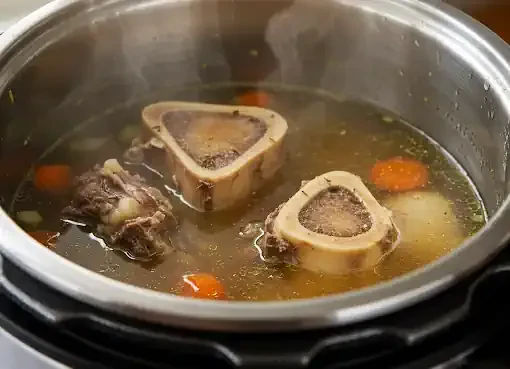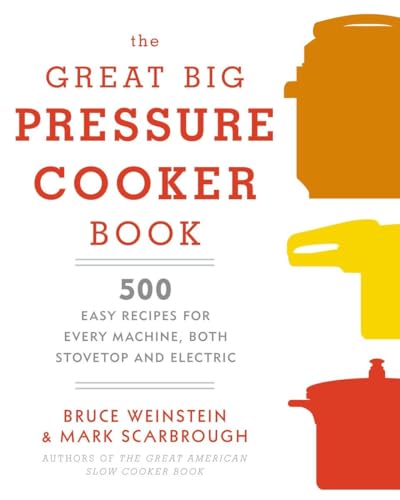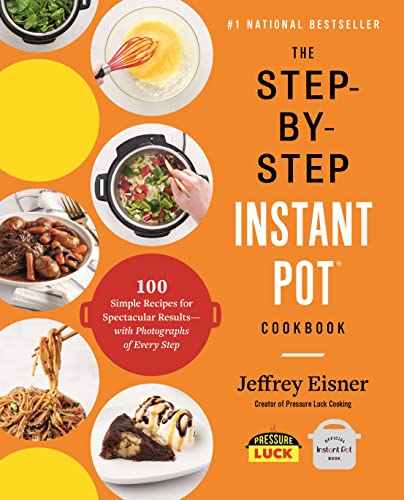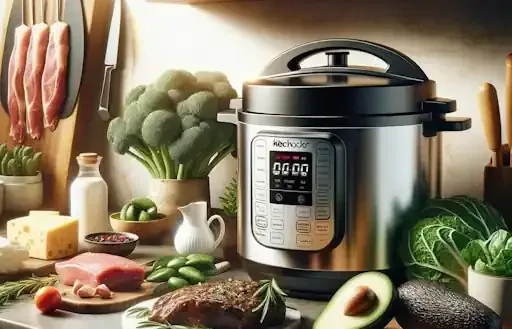Why Pressure Cooker Bone Broth Is A Game-Changer
Bone broth, a nourishing elixir steeped in tradition, has long been revered for its health benefits and culinary versatility. While simmering bones for hours or even days on the stovetop yields exceptional results, the advent of the pressure cooker has revolutionized this age-old practice. Pressure cooking allows you to harness the healing power of bone broth in a fraction of the time, making it a practical and accessible option for modern lifestyles.
With a pressure cooker, you can unlock the same gut-healing nutrients, rich flavor, and collagen goodness that slow-cooked bone broth offers, but in a matter of hours instead of days. This accelerated process preserves the integrity of the ingredients, resulting in a nutrient-dense broth that's perfect for sipping, cooking, and nourishing your body from the inside out.
Whether you're seeking to improve your gut health, boost your immune system, or simply enjoy a comforting and flavorful beverage, pressure cooker bone broth is an excellent choice. Its versatility extends beyond soup, finding its way into sauces, risottos, braises, and even smoothies, offering a myriad of ways to incorporate this nutritional powerhouse into your daily routine.
The pressure cooker breathes new life into the ancient art of bone broth making, merging tradition with convenience. By harnessing the power of steam and pressure, it streamlines the process without sacrificing flavor or nutritional value. This modern approach to bone broth democratizes this once time-consuming endeavor, making it accessible to busy individuals, health enthusiasts, and anyone seeking to nourish their bodies with a wholesome and delicious elixir.
The applications of bone broth extend far beyond the soup bowl. Its rich flavor and gelatinous texture make it an ideal base for sauces, adding depth and complexity to your culinary creations. You can use it to deglaze pans, create flavorful reductions, or even incorporate it into your morning smoothie for an extra boost of protein and nutrients. Bone broth's versatility knows no bounds, offering endless possibilities to enhance your cooking and elevate your well-being.
Essential Ingredients For Flavorful Bone Broth
Crafting a delicious and nutritious bone broth begins with selecting the right ingredients. While the core components remain consistent, there's room for creativity and personalization to suit your taste preferences and dietary needs.
Bones: The Foundation Of Flavor And Nutrition
The type of bones you choose will significantly impact the flavor profile and nutritional content of your broth. Chicken bones, particularly backs, necks, and feet, are a popular choice for their mild flavor and high collagen content. Beef bones, such as marrow bones, knuckle bones, and oxtails, offer a richer, more robust flavor and are prized for their gelatin and mineral content. You can also experiment with other animal bones like lamb, pork, or fish for unique flavor variations.
Aromatic Vegetables: Adding Depth And Complexity
Aromatic vegetables like onions, carrots, and celery form the classic mirepoix base for bone broth, infusing it with savory depth and subtle sweetness. Garlic adds a pungent kick, while ginger offers a warm, slightly spicy note. You can also include other vegetables like leeks, parsnips, or fennel for additional flavor dimensions.
Apple Cider Vinegar: Unlocking Hidden Nutrients
Apple cider vinegar plays a crucial role in extracting minerals from the bones, making them more bioavailable for your body to absorb. Its acidity helps break down the collagen and connective tissues, resulting in a richer, more flavorful broth. While its taste is not noticeable in the final product, its contribution to the nutritional value of the broth is significant.
Herbs And Spices: Your Flavorful Finishing Touches
Herbs and spices elevate the flavor profile of your bone broth, adding complexity and warmth. Bay leaves, peppercorns, and thyme are classic additions, while parsley, rosemary, or sage can lend herbal notes. For a touch of heat, consider chili flakes or a small piece of dried chili pepper.
Optional Additions: Boosting The Nutritional Profile
While the core ingredients provide a solid nutritional foundation, you can further enhance your bone broth by incorporating optional additions. Seaweed, such as kombu or wakame, adds trace minerals and a subtle umami flavor. Medicinal mushrooms like shiitake or reishi offer potential immune-boosting properties. Nutritional yeast provides a cheesy flavor and B vitamins. You can also experiment with other ingredients like turmeric, garlic scapes, or even leftover vegetable scraps to personalize your broth.
Step-By-Step Guide To Pressure Cooker Bone Broth
Creating nourishing bone broth in your pressure cooker is a straightforward process that yields impressive results. By following these steps, you'll be well on your way to enjoying homemade broth that's both flavorful and packed with nutrients.
Prepping Your Ingredients: A Simple Process
Begin by rinsing your bones under cold water to remove any debris. If you're using beef bones, consider roasting them in the oven at 400°F (200°C) for about 30 minutes to enhance their flavor and color. While the bones are roasting, roughly chop your aromatic vegetables and gather your other ingredients.
Browning The Bones: Adding Richness And Color
If you haven't roasted your bones, you can brown them directly in the pressure cooker using the sauté function. This step adds depth of flavor and a beautiful golden hue to your broth. Once the bones are browned, remove them from the pot and set them aside.
Deglazing The Pot: Capturing Every Bit Of Flavor
Deglazing the pot involves adding a splash of liquid, such as water or apple cider vinegar, to the hot pot and scraping up any browned bits stuck to the bottom. This flavorful residue, known as fond, adds richness and complexity to your broth.
Adding Liquids And Aromatics: Building The Base
Return the browned bones to the pressure cooker and add enough water to cover them by about an inch. Then, add your chopped aromatic vegetables, apple cider vinegar, herbs, and spices. If you're using any optional additions like seaweed or mushrooms, add them now as well.
Pressure Cooking Magic: Transforming Bones Into Broth
Secure the lid of your pressure cooker and set it to high pressure. The cooking time will vary depending on the type of bones you're using: chicken bones typically require 2-3 hours, while beef bones may need 4-6 hours. Once the cooking time is complete, allow the pressure to release naturally for about 10-15 minutes before carefully opening the lid.
Straining, Storing, And Serving Your Bone Broth
After your pressure cooker has worked its magic, it's time to separate the solids from the liquid and enjoy the fruits of your labor.
Separating The Solids: A Smooth, Silky Broth
Once the pressure has released naturally, carefully open the lid of your pressure cooker. You'll notice a layer of fat on top of the broth, which you can skim off if desired. Using a fine-mesh strainer or cheesecloth, strain the broth into a large bowl or pot, discarding the solids. The resulting broth should be clear, flavorful, and full of nourishing goodness.
Storing Your Creation: Fridge, Freezer, Or Both?
Bone broth can be stored in the refrigerator for up to 5 days or in the freezer for up to 6 months. For convenience, consider portioning the broth into smaller containers before freezing. This way, you can easily thaw and use the desired amount without having to defrost the entire batch.
Serving Suggestions: From Sipping To Sauces
Bone broth is incredibly versatile and can be enjoyed in numerous ways. You can sip it warm as a comforting beverage, use it as a base for soups and stews, or incorporate it into sauces, risottos, and braises. It can even be added to smoothies for an extra boost of protein and nutrients.
Bone Broth Variations: Exploring Different Flavors
While the classic recipe is delicious on its own, don't be afraid to experiment with different flavors and ingredients. You can add curry paste and coconut milk for a Thai-inspired twist, miso paste for a Japanese-style broth, or even roasted tomatoes and basil for a Mediterranean flair.
Troubleshooting Tips: Common Issues And Solutions
If your broth turns out cloudy, it may be due to impurities that weren't adequately strained out. You can try straining it again through a finer mesh or cheesecloth. If your broth lacks flavor, consider adding a pinch of salt or additional herbs and spices. It's also important to note that bone broth will naturally gel when chilled due to its high collagen content. Simply reheat it gently to return it to a liquid state.
Bone Broth For Every Lifestyle And Diet
The beauty of bone broth lies in its adaptability to various dietary needs and preferences. Whether you follow a specific eating plan or simply seek a nutritious and flavorful addition to your meals, bone broth can seamlessly integrate into your lifestyle.
Paleo, Keto, Whole30: Bone Broth Fits Right In
Bone broth is a staple in Paleo, Keto, and Whole30 diets due to its high protein and fat content, absence of carbohydrates, and gut-healing properties. It provides essential nutrients like collagen, glycine, and proline, which support joint health, skin elasticity, and gut integrity.
Vegetarian And Vegan Alternatives: Flavor Without Bones
While traditional bone broth is made from animal bones, there are delicious and nutritious alternatives for vegetarians and vegans. Mushroom broth, made from a variety of mushrooms like shiitake, maitake, and cremini, offers a savory umami flavor and potential immune-boosting benefits. Vegetable broth, made from a medley of vegetables and herbs, provides a lighter yet flavorful option.
Healing Diets: Bone Broth For Gut Health And More
Bone broth is often recommended for those following healing diets like GAPS (Gut and Psychology Syndrome) or AIP (Autoimmune Protocol) due to its gut-healing properties. The gelatin and collagen in bone broth help soothe and repair the intestinal lining, reducing inflammation and promoting gut health.
Customizing Your Broth: Tailoring To Your Needs
Bone broth is highly customizable to suit your individual needs and preferences. You can adjust the cooking time, ingredients, and seasoning to create a broth that perfectly complements your dietary restrictions or taste preferences. For example, if you're sensitive to nightshade vegetables, you can omit tomatoes and peppers from the recipe.
Community And Inspiration: Connecting With Fellow Broth Lovers
The world of bone broth is a vibrant and supportive community of health enthusiasts, home cooks, and wellness advocates. Many online forums and social media groups offer a wealth of information, recipes, and inspiration for incorporating bone broth into your lifestyle. You can connect with fellow broth lovers, share your experiences, and learn from their expertise.
Summary
This comprehensive guide unveils the secrets of crafting nourishing and flavorful bone broth using a pressure cooker. Discover how this modern appliance revolutionizes the traditional method, allowing you to unlock the health benefits of bone broth in a fraction of the time. Learn about the essential ingredients, step-by-step instructions, and creative ways to incorporate this versatile elixir into your diet and lifestyle. Whether you're seeking gut-healing properties, immune support, or simply a comforting and delicious beverage, pressure cooker bone broth offers a simple and accessible path to optimal well-being.







